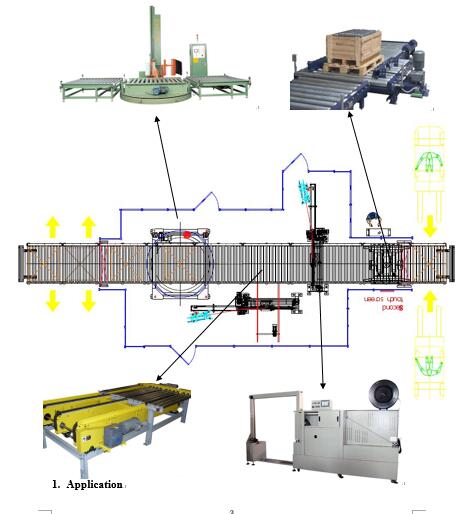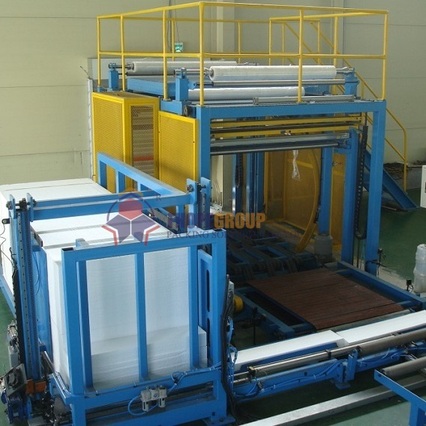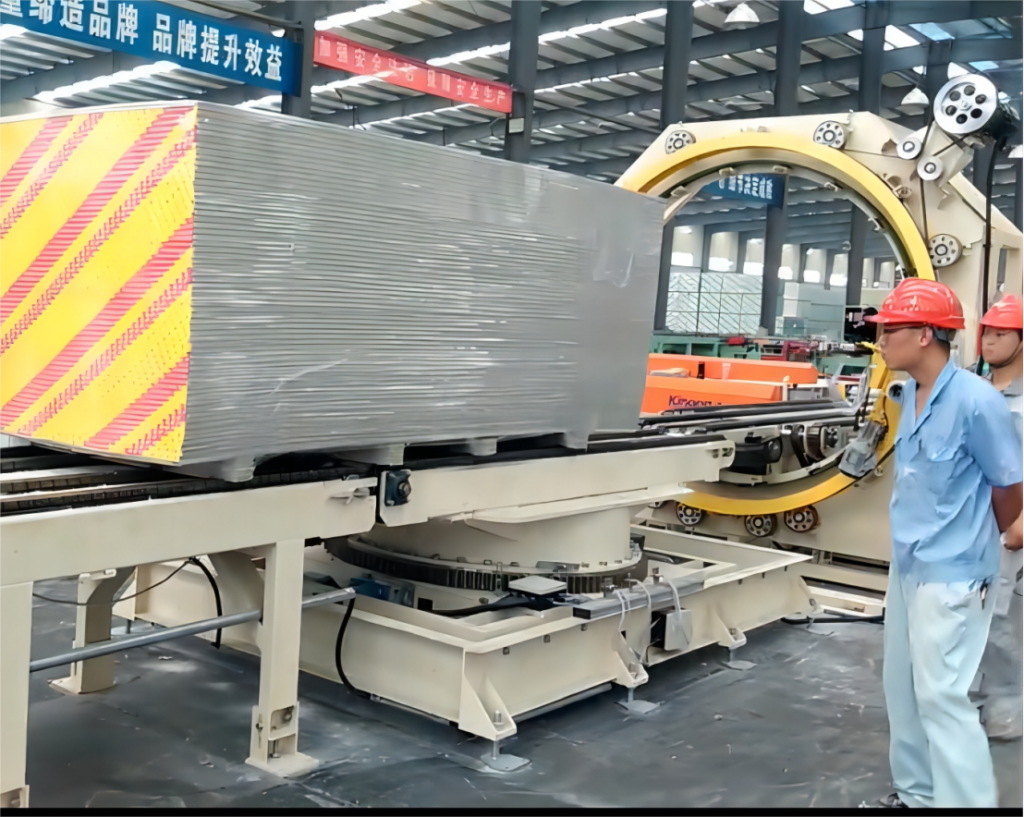Understanding Pallet Wrapping Machines: Key Requirements for Optimal Operation
In modern manufacturing and distribution centers, ensuring palletized loads are stable and protected during handling, storage, and transit is crucial. Pallet wrapping machines, particularly stretch wrappers, play a vital role in achieving efficient and secure unitization. Investing in the right equipment can streamline the end-of-line packaging process, reduce reliance on manual labor, enhance load containment, and minimize product damage.
 { width="466" height="514" alt="Turntable pallet stretch wrapping machine wrapping a pallet load." }
{ width="466" height="514" alt="Turntable pallet stretch wrapping machine wrapping a pallet load." }
Image: A typical turntable stretch wrapping machine securing a palletized load.
While some systems, often referred to as pallet packing machines, might integrate stacking and wrapping functions, the most common equipment focuses specifically on applying stretch film. A dedicated stretch wrapper automates the application of stretch film around a loaded pallet, providing crucial stability and protection against shifting, dust, and moisture. This automation not only accelerates the packaging cycle but also ensures consistent wrap tension and film usage, often leading to material cost savings compared to manual wrapping methods.
Essential Operational Requirements for Pallet Wrapping Equipment
Successfully integrating and operating pallet packing or stretch wrapper machines requires careful consideration of several fundamental requirements impacting installation, workflow, and performance:
1. Power Supply Specifications
- Voltage and Phase: These machines require a stable electrical connection. Common requirements are 220-240V AC, single-phase or three-phase, depending on the motor sizes (turntable drive, carriage lift, film pre-stretch) and overall power consumption of the specific model. Always verify the machine's power requirement against your facility's available supply and ensure proper circuit protection.
2. Compressed Air System (If Applicable)
- Pneumatic Functions: Many automated and semi-automated wrappers utilize pneumatic components for functions like film clamping and cutting systems, or top sheet dispensers. These systems typically require a supply of clean, dry compressed air, often at pressures between 6-8 bar (approx. 85-115 psi). Ensure your facility's compressed air system can meet the specified volume (CFM or m³/h) and pressure demands without significant drops.

eps sandwich panel packing line1 3. Space and Layout Considerations
- Machine Footprint: Allocate adequate floor space for the machine itself, including necessary safety clearances for moving parts (like a rotating turntable or a swinging rotary arm). Refer to the manufacturer's layout drawings.
- Loading/Unloading Zones: Sufficient, clearly defined area must be available for forklifts or pallet jacks to safely approach, maneuver, load pallets onto the machine, and unload wrapped pallets. Consider workflow efficiency and traffic patterns to prevent bottlenecks.
- Operator Access: Ensure clear, unobstructed pathways for operators to easily access control panels, film roll loading mechanisms, and perform routine checks or adjustments safely.
4. Product Handling Capabilities
- Load Dimensions & Weight: Every machine model has specified maximum (and sometimes minimum) load dimensions (length, width, diagonal, height) and a maximum weight capacity. Ensure the machine selected is rated for the full range of pallet loads you intend to process. Attempting to wrap oversized or overweight loads can cause machine damage, poor wrap quality, and significant safety hazards.

panel packing 5. Control Systems and Automation Level
- Operational Complexity: The level of automation dictates the control system. Options range from basic manual start/stop controls on entry-level machines to sophisticated Programmable Logic Controllers (PLCs) managing pre-programmed wrap cycles, adjustable parameters (top/bottom wraps, tension, speed), variable frequency drives (VFDs) for smooth motor control, and integration with sensors (e.g., photo-eyes for automatic load height detection). Choose a system that matches your throughput needs and operator skill level.
6. Ancillary Equipment and Materials
- Material Handling: Depending on your operation, you'll need reliable equipment like pallet jacks or forklifts for moving pallets to and from the wrapper.
- Consumables: Ensure compatibility with the required stretch film type (gauge, width, pre-stretch capability) and core size specified by the machine manufacturer.
7. Maintenance Access and Procedures
- Serviceability: Plan for sufficient clear space around the machine (as recommended by the manufacturer) to allow technicians safe and convenient access for preventative maintenance tasks (lubrication, inspection, cleaning), troubleshooting, and necessary repairs as outlined in the equipment's service manual.
8. Safety Standards and Features
- Compliance and Guarding: Installation must comply with all relevant local, national, and industry safety standards (e.g., OSHA requirements in the US, CE marking in Europe). Machines should incorporate essential safety features such as clearly marked emergency stop buttons (E-stops), appropriate physical guarding around moving components, and potentially safety interlocks, light curtains, or area scanners in fully automated setups to protect personnel during operation. Proper operator training on safe operating procedures is paramount.

orbital stretch wrapper for panel 6 sides wrapping (3) Optimizing Your Pallet Wrapping Process
Understanding and meeting these core operational requirements is fundamental to successfully implementing and running a pallet packing or stretch wrapping solution efficiently and safely. Proper planning during the selection and installation phases ensures not only reliable machine operation but also contributes significantly to workplace safety, consistent load containment, and the overall integrity of your packaged goods as they move through the supply chain. By selecting equipment appropriate for your specific load characteristics and operational throughput, and ensuring the necessary facility infrastructure and safety protocols are in place, manufacturers and distribution centers can effectively leverage automated wrapping technology to enhance productivity and protect their valuable products.

